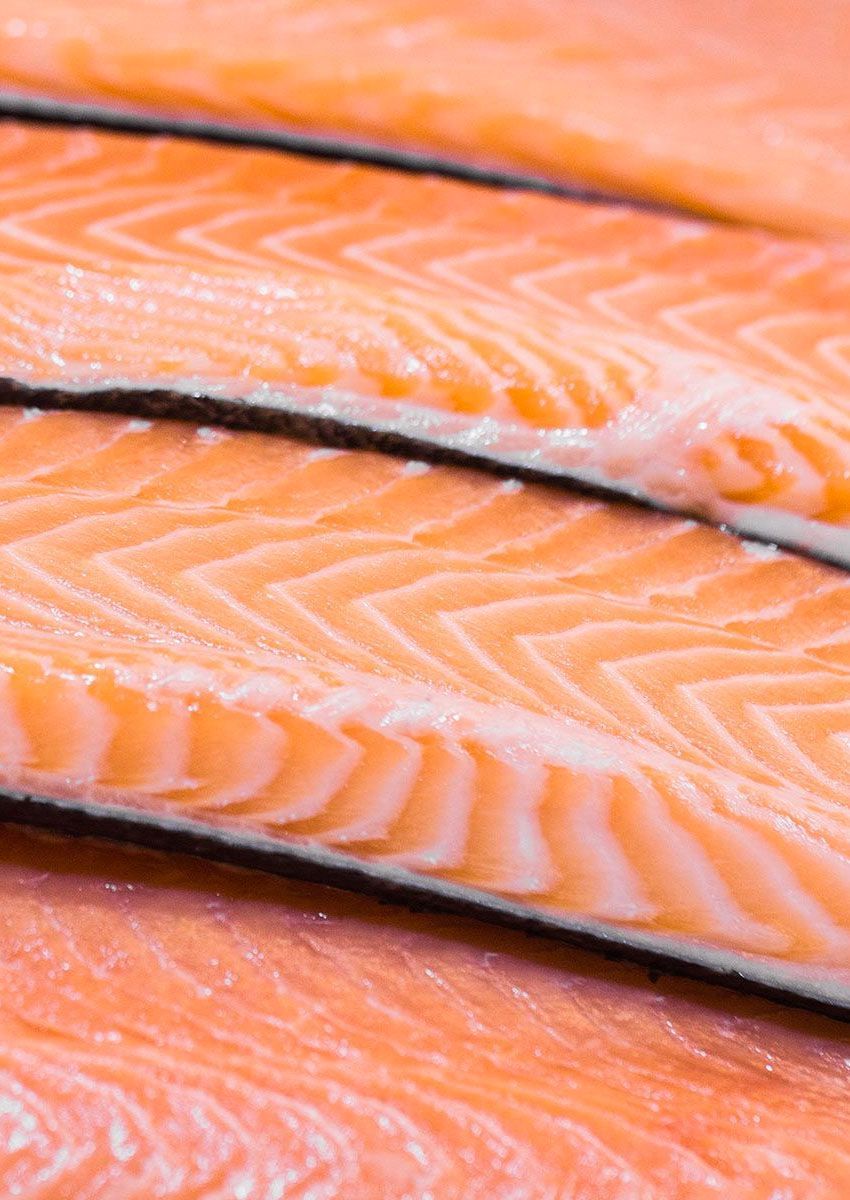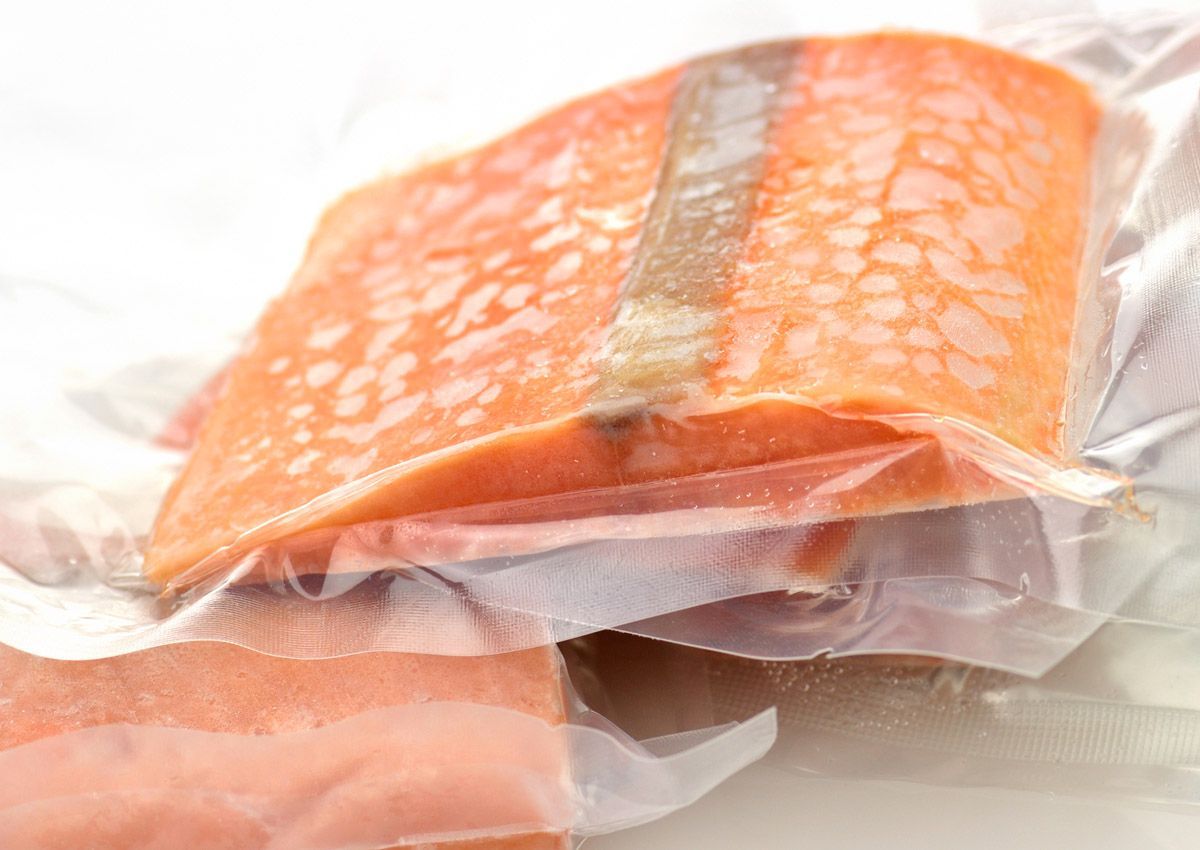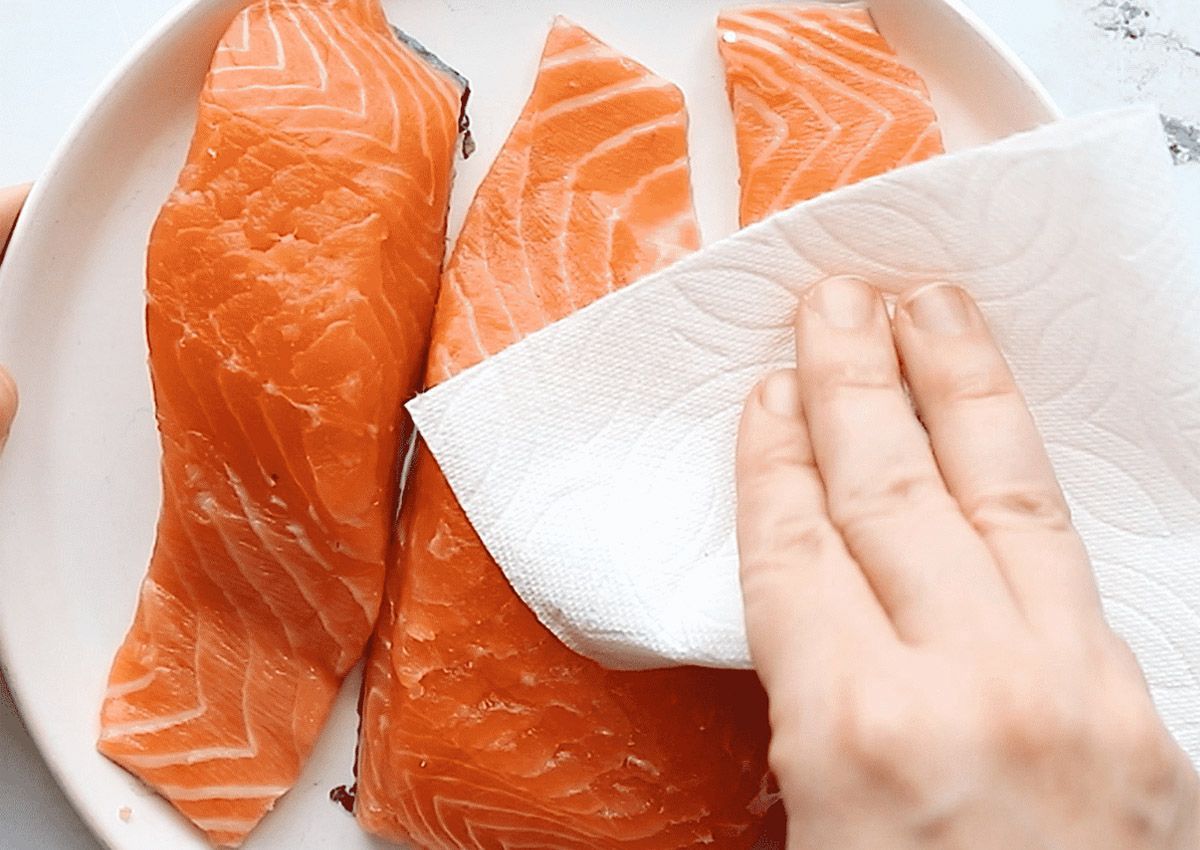Our recommendations are made independently. We may receive commissions from purchases made via our links.
How to Defrost Salmon
Incredibly rich in flavor and nutrients, salmon is often the choice fish for seafood lovers. Here is how to defrost salmon in the quickest, safest manner.
Having the knowledge on how to defrost salmon is super useful if you love seafood. Famed for its unique, mildly-flavored flesh, salmon is one of the most consumed fishes in the world. You will be missing out on a lot if you don’t try making a salmon-themed recipe at least once in your kitchen.
However, since seafood is so perishable, they are often deep-frozen before they’re put on sale. When you take it home, the first thing the packaging will tell you to do is to put it into the freezer immediately, too. Defrosting the fish from its frozen-solid state is an unskippable step.
Here is everything you need to know about defrosting salmon!

What Are the Risks of Improper Defrosting?
Defrosting isn’t just about thawing the fish as quickly as possible. It’s also about thawing it as safely as possible.
Salmon — similar to every other raw food — is riddled with bacteria. It’s not difficult to spot traces of bacteria like Salmonella and Vibrio on raw salmon. Both of them can cause serious poisoning if ingested.
It’s a lethal misconception that deep freezing essentially sterilizes the fish like boiling. This is as far from the truth as could be.
When bacteria are exposed to extreme cold temperatures, they do not die away. Instead, they go into hibernation mode. They wiggle around less and don’t multiply. Nonetheless, they’re still kicking and biding their time. The moment the temperature increases (like when you defrost it), they will wake and thrive again.
Bacteria multiply the quickest in the temperature range between 40°F and 140°F. The USDA calls this the ‘danger zone’.
This concept is very important for defrosting. Your food should never stay in this temperature range for more than 2 hours.
The Best Ways to Defrost Salmon Quickly
Over the years, people have thought up a variety of ways to defrost salmon. Nonetheless, there are only three “official” defrosting methods that have been vetted and recommended by the USDA.
1. Thawing Salmon in the Fridge
This is the gold standard for defrosting. It is the simplest and safest out of all three methods.
The catch, though, is time. Your salmon will need a minimum of 24 hours to defrost. It’s important to plan ahead if you decide to use this method.

Step 1: Prep the Salmon for the Fridge
Take the salmon out of its original packaging and rinse thoroughly. Pat dry before covering it up with plastic wraps.
Step 2: Put in the Fridge
Put the wrapped-up salmon into a lidded container or a freezer bag.
Store on the fridge’s lowest shelf. Because cold air sinks, the bottom is where it’s coldest. The colder it is, the less of a problem bacteria will be.
Give the fish at least 24 hours to warm up before taking it out to cook. Since the fridge’s temperature is usually set well below 40°F, you can store it there for an extra day or two without any issue.
2. Defrost Salmon in Cold Water
If you don’t have 24 hours to spare, you can use this method instead. It is just as effective as defrosting in the fridge, only this time it is much quicker. You only need to spare 20 minutes rather than an entire day.
Bear in mind that in those 20 minutes, you will have to be on your feet quite a lot. That, to many, could be considered a disadvantage.

Step 1: Pack Up the Salmon
Take the salmon out of its vacuum-sealed packaging and transfer it into a watertight Ziploc bag. Seal the bag as tightly as possible so that no water can enter.
Step 2: Prepare a Pot of Water
It doesn’t necessarily have to be a pot. Any vessel that is large enough to fully submerge the bag will do, including a sink or a large bowl.
Fill your container of choice with cold water.
Do not use hot water. Hot water will cause the meat to warm up rapidly, creating an ideal environment for bacteria to grow.
Water temperature should be 70°F or less. Use a thermometer for certainty. If the water is too warm, you can add ice cubes to cool it down.
Step 3: Submerge the Bag
Carefully lower the bag into the water until it is completely submerged. The average cut of salmon will take around 20 minutes to warm.
Step 4: Change Out the Water at Half-Time
Around 10 minutes in, we recommend changing the water to ensure that it doesn’t become too warm.
Step 5: Fish Out and Cook
Fish the bag of salmon out of the water, unseal, and pat dry any lingering moisture with a clean cloth. Cook right away since the salmon will have been quite warm by then.
3. How to Defrost Salmon in the Microwave
The microwave is your last resort when you’re seriously out of time. By zapping the frozen salmon in the microwave, you can defrost it in less than 5 minutes.
It’s important to note there are a few caveats.
First, because the microwave’s heat is very intense, you have to time the defrosting process carefully. If not, there’s a possibility that the salmon will begin to cook rather than defrost.
Second, the microwave can suck out a lot of the moisture from within the flesh. This can make it chewy, which isn’t the texture that most people aim for with salmon.
Deliberate carefully before you pick this defrosting method.

Step 1: Put the Salmon into the Microwave
Bring out a microwave-safe plate and put the cut of salmon on top. The plate will protect the oven’s interior from getting dirty and save you the cleaning afterward.
Step 2: Defrost
Use the Defrost mode and set the timer for 30 seconds. Heat the salmon using 30-second bursts until it reaches the correct temperature.
Step 3: Cook Immediately
Take the salmon out of the microwave and begin to cook it right away. You don’t want to wait as it’s most likely already at a perfect temperature for bacterial growth.
Can You Cook Salmon from Frozen?
This may surprise a lot of people. It is actually safe to cook frozen salmon. As long as the fish is cooked to the correct internal temperature, it is safe for consumption.
Preparing frozen foods is actually a lot better than defrosting food safety-wise. The fish won’t have to spend too long within the ‘danger zone’ (a few minutes at most). As such, bacteria is not much of an issue when you cook the salmon this way.
The only downside is that cooking time will be 50% longer due to the fish’s frozen state. Keep that in mind and schedule your meal accordingly.
Conclusion
It’s not difficult to learn how to defrost salmon. You probably already know a few of these methods.
Nevertheless, it’s always a good thing to review the details regarding the risks!





